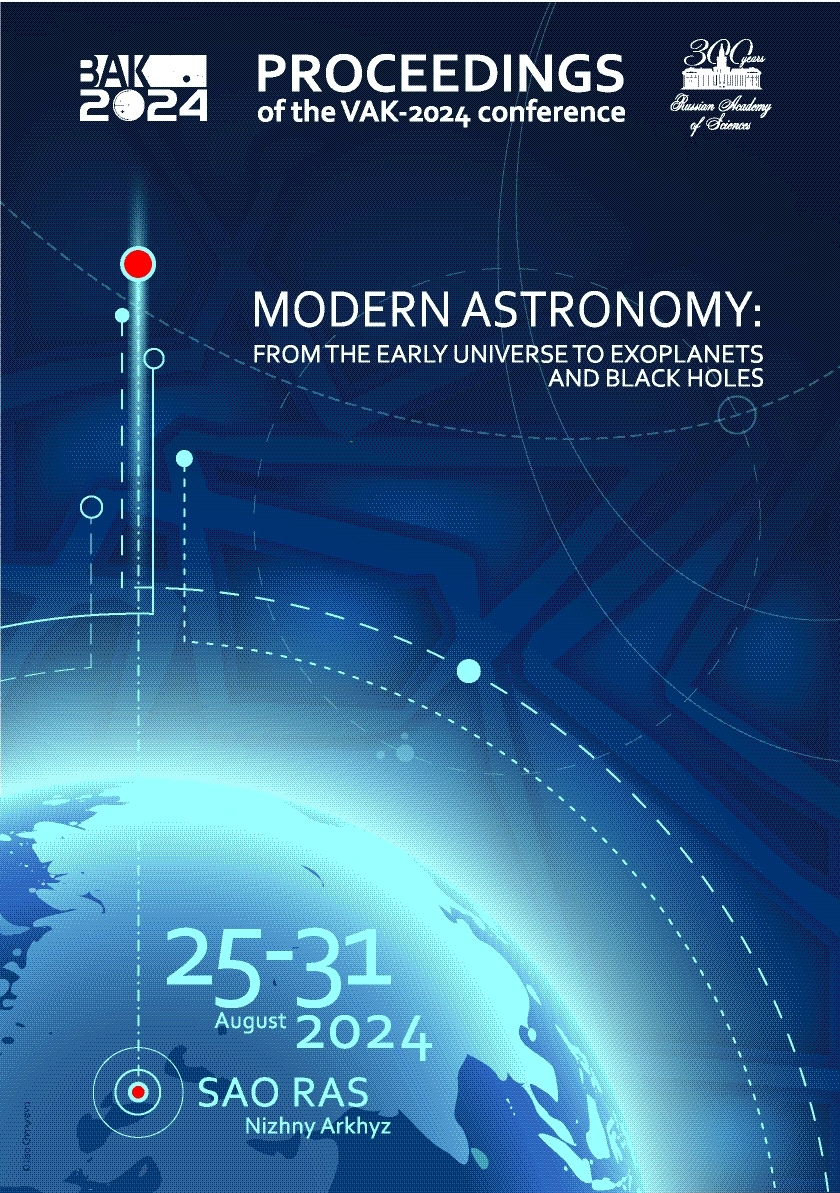UDC 53
UDC 520
UDC 521
UDC 523
UDC 524
UDC 52-1
UDC 52-6
CSCSTI 41.00
CSCSTI 29.35
CSCSTI 29.31
CSCSTI 29.33
CSCSTI 29.27
CSCSTI 29.05
Russian Classification of Professions by Education 03.06.01
Russian Classification of Professions by Education 03.05.01
Russian Classification of Professions by Education 03.04.03
Russian Library and Bibliographic Classification 2
Russian Library and Bibliographic Classification 223
Russian Trade and Bibliographic Classification 614
Russian Trade and Bibliographic Classification 6135
BISAC SCI004000 Astronomy
BISAC SCI005000 Physics / Astrophysics
The paper presents the results of statistical modeling of the entry of near-Earth objects (NEOs) into the near-Earth space - a sphere with a radius of 0.01 AU around the Earth. The distributions of asteroids in the direction and velocity of approach to the Earth are constructed. The NEO population was modeled using the NEOMOD package and integrated for 110 years using the REBOUND package. The main results are: 1) the number of asteroids larger than 10 m in size entering to near-Earth space is approximately 1000 per year; 2) up to half of the asteroids can enter the near-Earth space from the side of the day-time-hemisphere; 3) there is anisotropy in the flux density of incoming asteroids. Typical velocity of approach to the Earth at the entrance to the near-Earth space is approximately 7.5 km/s (maximum speed can reach up to 30 km/s). These distributions can be useful in the design of a System of Observation of Day-time Asteroids (SODA).
minor planets; asteroids: general; methods: numerical; Earth
1. Farnocchia D., Bernardi F., Valsecchi G.B., 2012, Icarus, 219, 1, p. 41
2. Naroenkov S.A. and Shustov B.M., 2012, Cosmic Research, 50, 3, p. 221
3. Nesvorný D., Vokrouhlický D., Shelly F., et al., 2024, Icarus, 411, id. 115922
4. Rein H. and Liu S.-F., 2012, Astronomy & Astrophysics, 537, id. A128
5. Rein H., Hernandez D.M., Tamayo D., 2019, Monthly Notices of the Royal Astronomical Society, 485, 4, p. 5490
6. Rein H. and Spiegel D.S., 2015, Monthly Notices of the Royal Astronomical Society, 446, 2, p. 1424
7. Shugarov A.S., and Shustov B.M., 2022, INASAN Science Reports, 7, p. 85
8. Shustov B.M., Shugarov A.S., Naroenkov S.A., et al., 2015, Astronomy Reports, 59, 10, p. 983
9. Shustov B.M., Naroenkov S.A., Emel'yanenko V.V., et al., 2013, Solar System Research, 47, 4, p. 288
10. Shustov B.M., Naroenkov S.A., Efremova E.V., 2017, Solar System Research, 51, 1, p. 38
11. Vere s P., Jedicke R., Wainscoat R., et al., 2009, Icarus, 203, 2, p. 472





